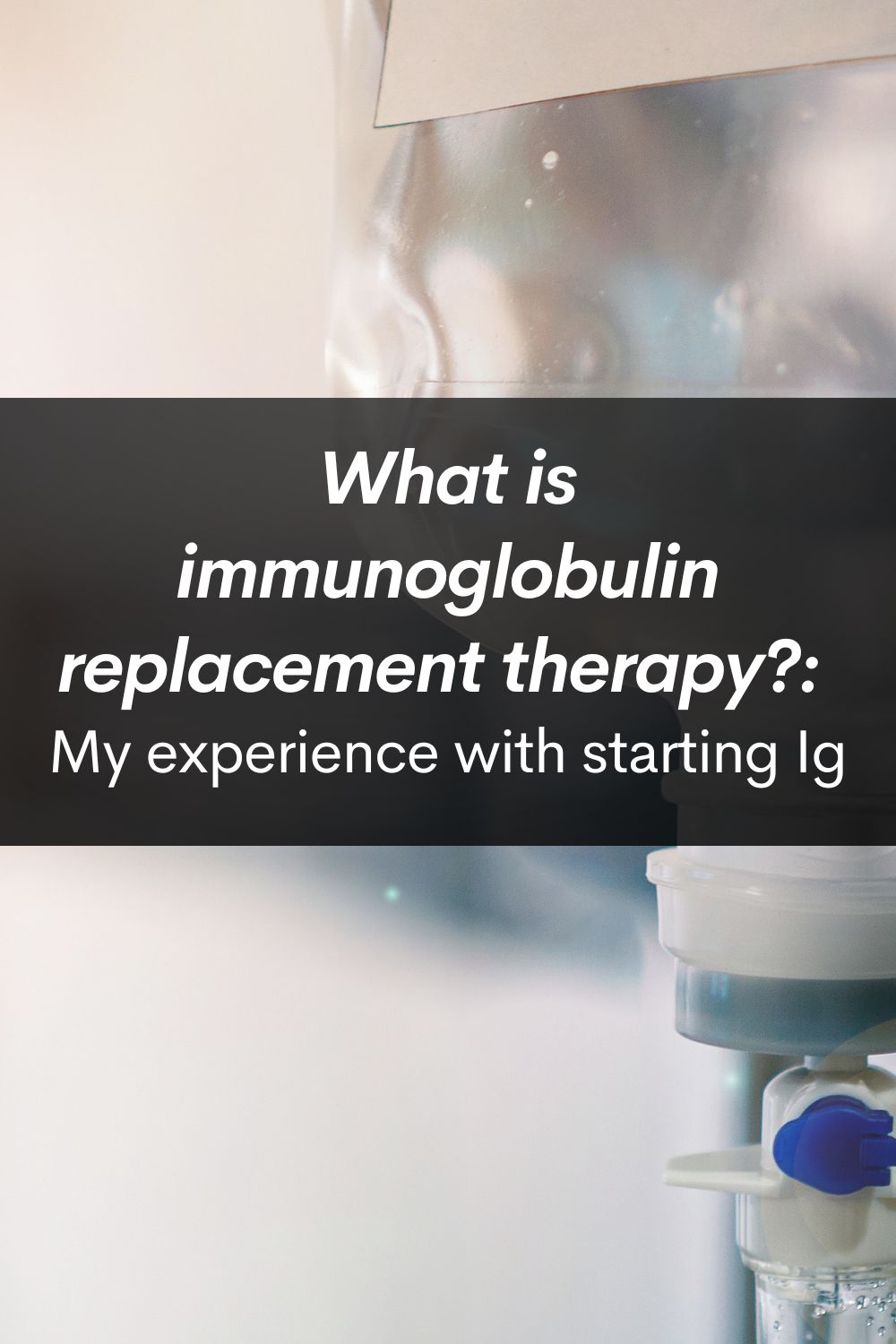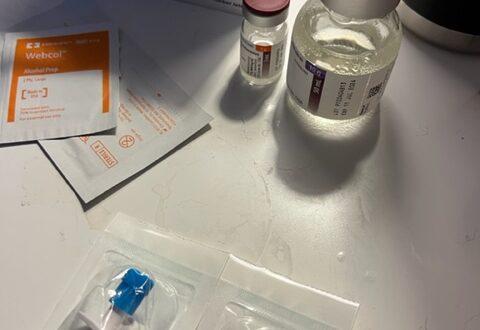
What is immunoglobulin replacement therapy (Ig)?: My experience with starting Ig
Table of Contents
Immunoglobulin replacement therapy, which can also be called immunoglobulin therapy or Ig therapy, is a medical treatment that involves the administration of immunoglobulins (antibodies) to people who have deficiencies in their immune system, specifically in their ability to produce antibodies. Immunoglobulins are proteins produced by plasma cells and are a crucial part of the immune system, helping the body defend against infections and diseases.

There are several conditions and diseases that may lead to immunoglobulin deficiencies, including primary immunodeficiency disorders, certain autoimmune diseases, and some types of cancer and bone marrow disorders.
Immunoglobulin replacement therapy is typically administered through intravenous (IV) infusions or subcutaneous (under the skin) injections, referred to as SCIg. The therapy aims to:
- Provide a temporary or long-term boost to the patient’s immune system by supplying the missing or deficient antibodies.
- Help the body fight off infections and reduce the frequency and severity of illnesses.
- Improve overall health and quality of life for those with immunodeficiency disorders.
The specific type and frequency of immunoglobulin replacement therapy depend on the underlying condition, the patient’s medical history, and their response to treatment. It may be administered on a regular schedule (e.g., every few weeks) or on an as-needed basis.
Side effects of the treatment can vary, and doctors will keep an eye on how the patient is responding to the treatment. According to CVS, the most common IVIg side effect is headache. Other possible side effects include muscle aches, chills, and tiredness. It is also important to note that most side effects occur in the first dose (or first couple of doses). Patients can also have allergic-type reactions.
When taking a blood draw, doctors can see how the therapy is replacing immunoglobulins and compare Ig levels from before and after treatment. Over time, they will monitor the patient’s levels.
My experience with immunoglobulin replacement therapy
When I was diagnosed with a primary immunodeficiency called CVID, my doctor immediately informed me that I would be starting immunoglobulin replacement therapy. My infusions would be subcutaneous because I was in college and needed flexibility. Also, the subcutaneous infusions were more frequent than the IV infusions, so I would have less fluctuation in my immunoglobulin levels. This would mean that I wouldn’t have super low periods where I felt really sick and tired.
When I first heard this, I had no idea what the infusions were going to entail. I had hardly even heard of immunoglobulins before. It was a strange new world that I had to get used to.
My way of coping was to try not to look into it too much in the beginning. If I kept Googling and looking at blood test results and trying to figure everything out, I would drive myself crazy. I knew that these specialized doctors were equipped with the knowledge and experience to provide me with the best treatment possible. I just had to trust the process.
When I started SCIg, I was in my hometown for the summer break between my freshman and sophomore year of college. Soon, I would be making the 9 hour drive back to Fort Collins, Colorado to move into my sorority house. I needed to get this treatment down so that I could administer it alone in my room.
The first treatment was done in an infusion room with big comfy chairs. Many people receive the IVIg here, since it is administered by a nurse. I saw a couple of other people in there when I went, and it made me feel better to know that I wasn’t alone.
A nurse showed me a YouTube video on each step to preparing and executing the infusion. At first, it was really overwhelming and I was scared that I would mess it up. I had no medical background and needles honestly really freaked me out.
I tried my best to pay attention, and my nurse talked me through every step. The worst part was seeing that I had to stab myself in the stomach with these needles. I had never done anything like this before. All I could do was take a deep breath and give it a try.
After my first infusion, the side effects were pretty horrible. I am not trying to scare anyone, but it just was not fun. Since I had been very sick for six months, I thought this would be nothing in comparison. But it was really hard. The infusion sites hurt. They felt almost like a bruise, but they were also very achey. I had a horrible headache and I was really tired. Overall, I just felt like my body had been through a lot. It makes sense, though, because this was a foreign process to my body.
The next infusion was a little bit better, and from there on it got better every time. Now, about 4 years later, I hardly get any side effects. Sometimes I get a little red and irritated around the infusion sites, but I just take an antihistamine. I also get a little bit sleepy during some infusions.
I am so grateful for Ig therapy because it has given me my life back. I get sick less frequently, and I can go out into the world knowing I have an extra layer of defense. It’s not always a fun process, but it’s necessary for me to feel like my best self.
My advice for those starting immuglobulin replacement therapy
Ig therapy is a foreign concept for many (including me at first). It can be anxiety-inducing and a disruption to your life routine.
If you’re just starting out, I want to let you know that you are taking the first step towards feeling better! I know it’s scary, but you can do this. You will learn the process and you will get down to a routine.

My advice is to lean on those around you for support. Each of my family members came to the infusion room to get an idea of how the treatment works, and it really showed me that they were in my corner.
Don’t be afraid to ask questions in the infusion room, especially if you’re learning SCIg to administer yourself. There’s a lot to remember, but you will get better and better over time.
And if you’re going into your first infusion – drink a lot of water!!!!
If you are going through immunoglobulin replacement therapy and are feeling some extreme nerves, feel free to reach out to me via my Contact page. I empathize greatly with those who are at the start of their journey.
It can be so overwhelming. Just remember how strong you are and give yourself grace!







One Comment
Hari
I am hearing about the immunoglobulin replacement therapy for the very first time and glad you are feeling better now. Thanks for putting this informative post together.